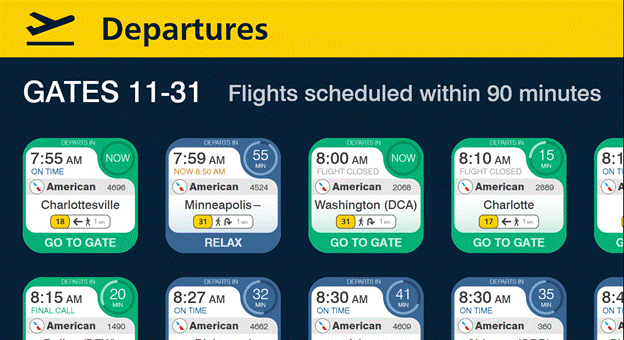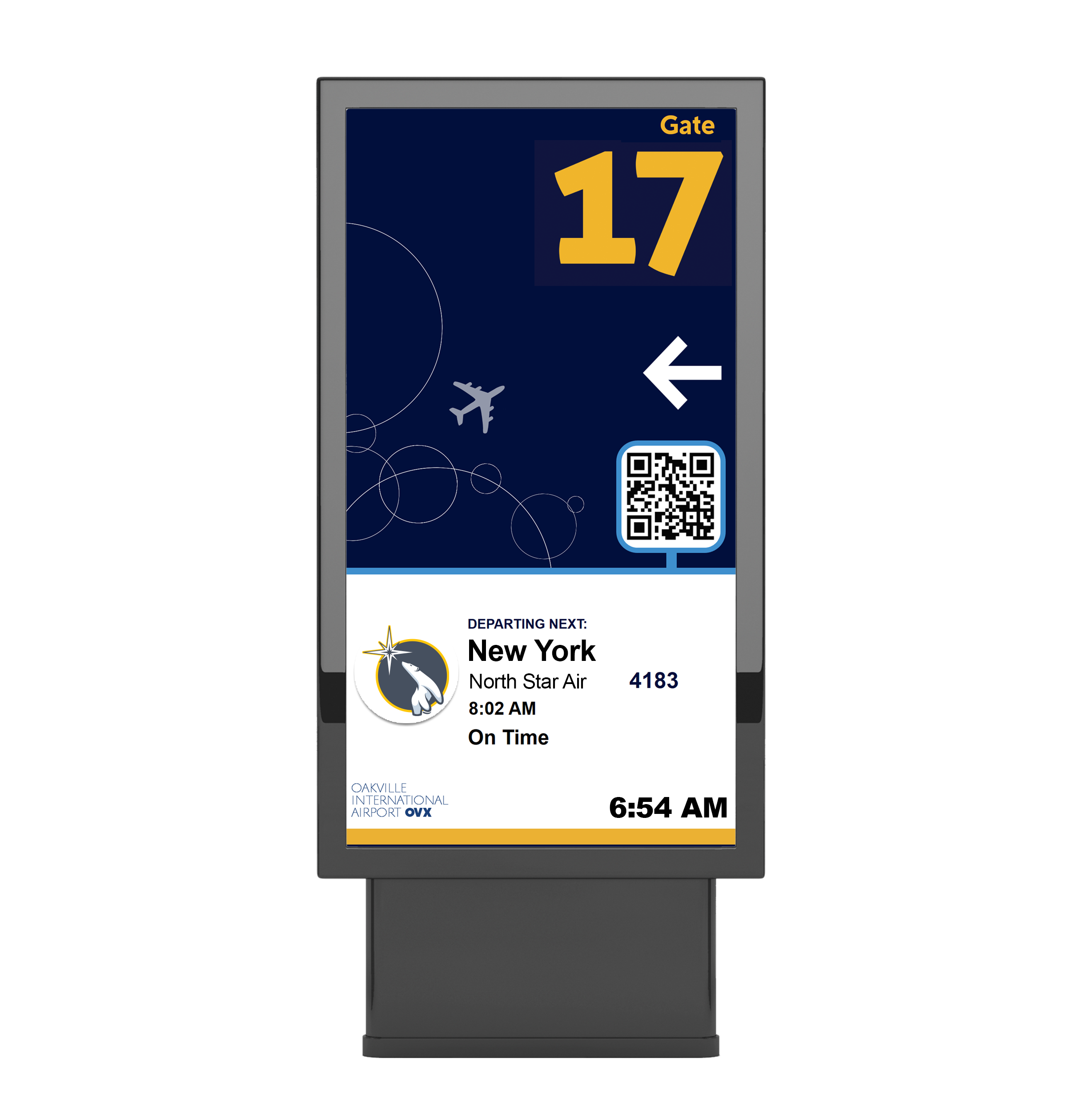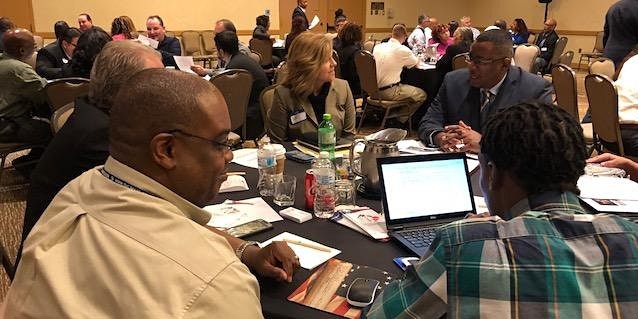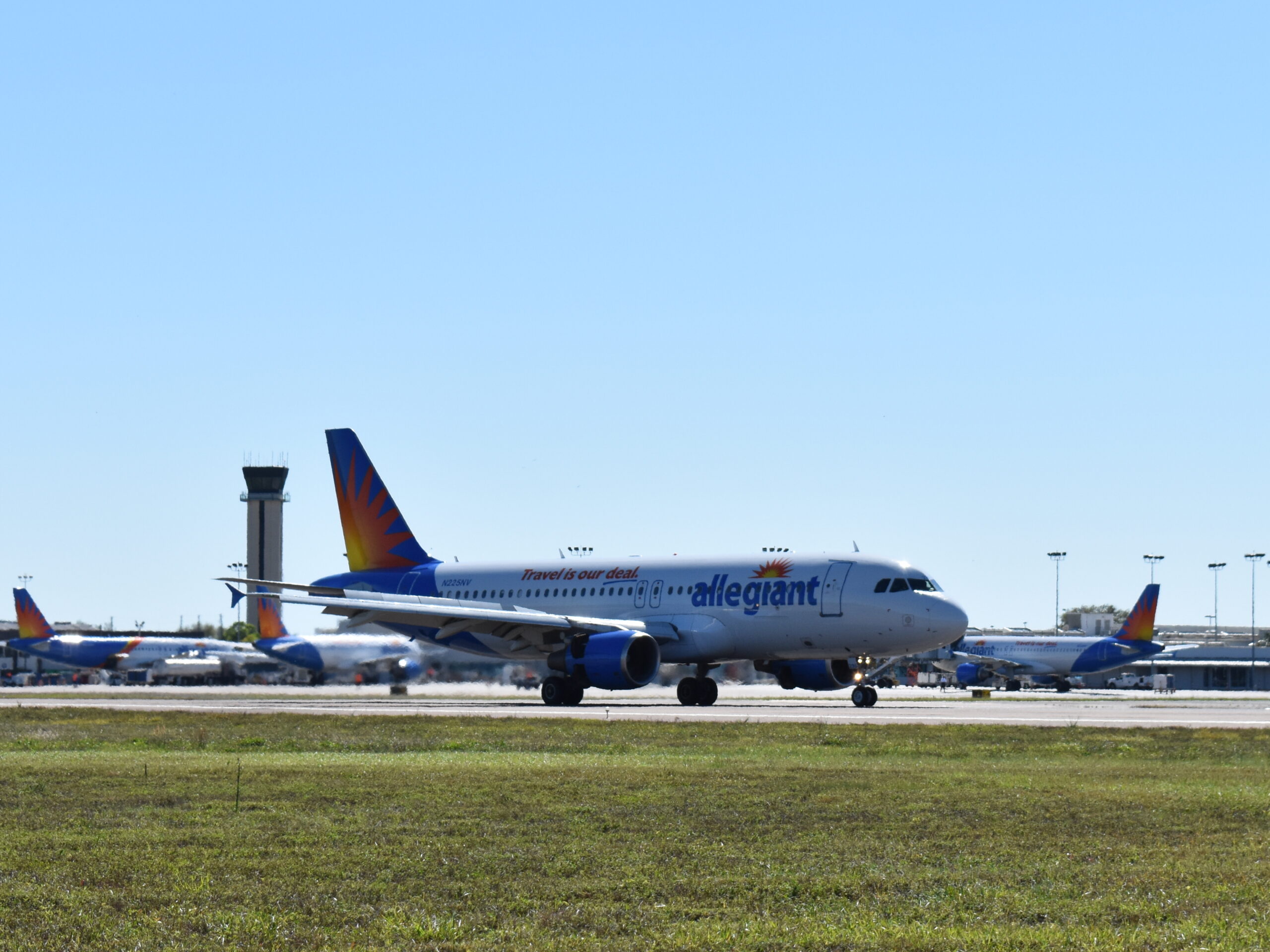By Colleen Hamilton, Principal, Art of Context
Maximizing resource use and improving the passenger experience are at the top of any airport’s priority list. FIDS has long been a key function in the airport ecosystem and new technologies exist that allow airports to maximize the information displayed while improving the passenger experience.
 Design template (example data). Leverage space on landscape screens without sacrificing display of flight information.
Design template (example data). Leverage space on landscape screens without sacrificing display of flight information.
Low-Row FIDS
Single use screens are a thing of the past. Today’s cloud-based FIDS provide opportunities for airports to automatically repurpose empty screen space to offer travelers a sense of place, useful travel information, or even advertisements.


FIDS has a large amount of metadata that can be used to drive other content allowing airports to automatically fill empty screen space. Repurposing screen space provides the opportunity to increase revenue with advertising, improve loyalty with airport promotions, and encourage tourism by highlighting local culture and attractions.
The display of non-flight information is based on a data-driven trigger that allows additional content such as a QR Code for information about the airport parking membership program, to automatically be shown, but only when there is enough room on screen to make the code easily scannable.
Advertisements of different sizes can be slotted as space allows and can be tied to our proof-of-play functionality for information collection and statistics gathering.
Urgency-based tile FIDS

Showing urgency tiles and standard row and column FIDS side-by-side in the same space provides data in different formats to engage travelers with varying learning styles. It allows airports to impact passenger flow – keeping passengers close to concessions to increase consumer spend, while also providing travelers with the most up to date information.
The tile format gives passengers an easily scannable view of their flight, along with strong color cues letting them know when it’s time to either relax or get to their gate. Tiles even flash yellow when particularly urgent. Our solution ties into the airport’s common-use system to leverage status messages entered by gate agents and to determine tile messaging and urgency styling.

To learn more about how Art of Context can help you reimagine your FIDS and to optimize your screen real estate, please visit us at booth 2 at the ACI Airports @ Work conference in Seattle, April 24 – 27, or visit us at www.artofcontext.com
 Colleen Hamilton is a principal with Art of Context, a Boston-based technology firm helping airports improve passenger experience through state-of-the-art technology solutions that reduce client administration and ensure extension for future innovations. Art of Context has recently been certified as a DBE.
Colleen Hamilton is a principal with Art of Context, a Boston-based technology firm helping airports improve passenger experience through state-of-the-art technology solutions that reduce client administration and ensure extension for future innovations. Art of Context has recently been certified as a DBE.
DISCLAIMER
This article was provided by a third party and, as such, the views expressed therein and/or presented are their own and may not represent or reflect the views of Airports Council International-North America (ACI-NA), its management, Board, or members. Readers should not act on the basis of any information contained in the blog without referring to applicable laws and regulations and/or without appropriate professional advice.











